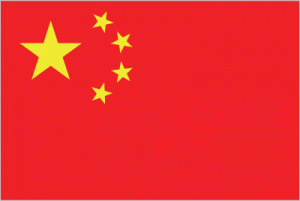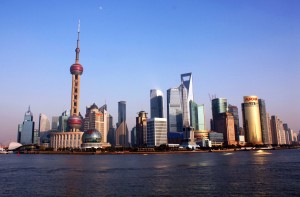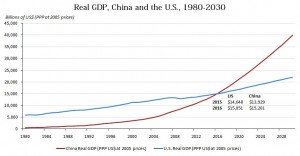China, officially known as the People’s Republic of China (PRC), is a sovereign country located in East Asia. With a population of about 1.35 billion, China is the world’s most populous state. Covering approximately 3.7 million square miles (9.7 million square kilometers), China is also the world’s second-largest country by land area after Russia. Moreover, China has the longest combined land border in the world, measuring 13,743 miles from the mouth of the Yalu River to the Gulf of Tonkin. China borders no less than 14 countries, a world record shared with Russia – Vietnam, Laos and Burma in Southeast Asia, India, Bhutan, Nepal and Pakistan in South Asia, Afghanistan, Tajikistan, Kyrgysztan and Kazakhstan in Central Asia, Russia and Mongolia in Inner Asia, and North Korea in Northeast Asia. In addition, China shares maritime boundaries with South Korea, Japan, Vietnam, the Philippines and Taiwan.
Basic History of China
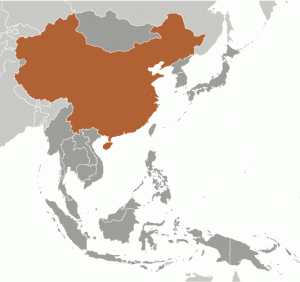 One of the world’s earliest civilizations, ancient China flourished in the basin of the Yellow River. Since 221 BC, when the grand unification under the Qin Dynasty took place, China was ruled by hereditary monarchies. The end of the country’s Imperial Era occurred in 1912, when the Republic was established. This led to a politically fragmented national government and to the first Chinese Civil War, between right-winged Kuomintang (KMT) (co-founded in 1912 by Sun Yat-sen and Song Jiaoren) and the Communist Party (CPC). The ideological conflict began in 1927 and ended in 1949. At the same time, China fought two wars against Imperial Japan, with the second conflagration taking place during World War II. About 20 million Chinese civilians died until 1945, when Japan surrendered. On October 1, 1949, Mao Zedong (Pinyin transliteration of Mao Tse-Tung) proclaimed the People’s Republic of China, after the Kuomintang retreated to Taiwan, Hainan, and their surrounding islands.
One of the world’s earliest civilizations, ancient China flourished in the basin of the Yellow River. Since 221 BC, when the grand unification under the Qin Dynasty took place, China was ruled by hereditary monarchies. The end of the country’s Imperial Era occurred in 1912, when the Republic was established. This led to a politically fragmented national government and to the first Chinese Civil War, between right-winged Kuomintang (KMT) (co-founded in 1912 by Sun Yat-sen and Song Jiaoren) and the Communist Party (CPC). The ideological conflict began in 1927 and ended in 1949. At the same time, China fought two wars against Imperial Japan, with the second conflagration taking place during World War II. About 20 million Chinese civilians died until 1945, when Japan surrendered. On October 1, 1949, Mao Zedong (Pinyin transliteration of Mao Tse-Tung) proclaimed the People’s Republic of China, after the Kuomintang retreated to Taiwan, Hainan, and their surrounding islands.
[wp_ad_camp_1]
In 1950, Communist China captured Hainan, occupying Tibet, and defeated the majority of the remaining right-wing forces. Under Mao Zedong’s rule, Chinese population almost doubled from 550 million to over 900 million, while the infamous Cultural Revolution led to a major upheaval in Chinese society. It was initiated by Mao in 1966 and continued until his death in 1976 with the intended purpose of reasserting himself as undisputed leader of China, wresting control from the Communist Party who he perceived as forcing his nation down the wrong path. The Cultural Revolution relied upon the nation’s youth to cleanse current “impurity” and reawaken the revolutionary spirit that Mao felt strengthened his people.
Still a single-party socialist state, China is ruled by President Xi Jinping at the time of this July, 2013 writing. China adopted its current constitution on December 4, 1982. The country’s capital city is Beijing and was established by Mao in 1949.
The economic reforms introduced in 1978 transformed China into the world’s fastest-growing major economy. As of 2013, China is the world’s second-largest economy by both nominal total GDP and purchasing power parity (PPP), and is also the world’s largest exporter and importer of goods. The Asian country also has world’s largest standing army, with the second-largest defense budget. China has been a United Nations member since 1971, and it is also a member of numerous formal and informal multilateral organizations, including the World Trade Organization (WTO), Asia-Pacific Economic Cooperation (APEC), BRICS (the association of the five major emerging economies, including Brazil, Russia, India and South Africa), the Shanghai Cooperation Organization, the BCIM (Bangladesh-China-India-Myanmar Forum) and the G-20 (Group of Twenty Finance Ministers and Central Bank Governors). All told, China is one of the world’s superpowers.
Geography of China
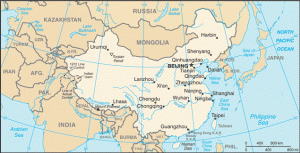 With a surface of about 3.7 million square miles (figures differ from one organization/agency to the other), China is the world’s second-largest country after Russia and is either the third- or fourth-largest by total area, after Russia, Canada and, depending on the definition of total area, the United States. China’s surface can grow up to 3,722,029 square miles if the Aksai Chin and the Trans-Karakoram Tract, which are controlled by China and claimed by India, are included. The country’s official area does not include the 386.1 square miles of territory ceded to China by Tajikistan following the ratification of a Sino-Tajik border agreement in January 2011.
With a surface of about 3.7 million square miles (figures differ from one organization/agency to the other), China is the world’s second-largest country after Russia and is either the third- or fourth-largest by total area, after Russia, Canada and, depending on the definition of total area, the United States. China’s surface can grow up to 3,722,029 square miles if the Aksai Chin and the Trans-Karakoram Tract, which are controlled by China and claimed by India, are included. The country’s official area does not include the 386.1 square miles of territory ceded to China by Tajikistan following the ratification of a Sino-Tajik border agreement in January 2011.
Because of its large territory, China’s landscapes varies significantly across its vast width. The east is predominated by alluvial plains, while the north comprises of broad grasslands. Southern China is dominated by hills and low mountain ranges, while the central-east hosts the deltas of China’s two major rivers, the Yellow River and the Yangtze River. To the west, China has major mountain ranges, most notably the Himalayas, and the arid Taklamakan and the Gobi Desert. China is also home to the world’s highest point, Mount Everest (29,029 feet / 8,848 meters), which lies on the Nepalese border. The country’s lowest point, and the world’s fourth-lowest, is the dried lake bed of Ayding Lake (-505 feet /-154m) in the Turpan Depression. One of China’s major landscape elements is the Great Wall. Built as fortification against invaders after China was unified under the Qin Dinasy in 221 BC, the Great Wall measures 13,171 miles. Even though there are many claims that the construction is visible from the moon, the Great Wall can barely be distinguished from the Earth’s lower orbit.
China’s climate is dominated by dry seasons and wet monsoons, which cause pronounced temperature differences between winter and summer. The climate in China differs from region to region because of the country’s highly complex topography. A major environmental issue in China is the expansion of its deserts, particularly the Gobi Desert, which is currently the world’s fifth-largest desert (ten times larger than the Mojave Desert and 2.6 times larger than the Great Basin Desert, both located in the United States). In recent decades, China has suffered from severe environmental deterioration and pollution caused by poorly enforced laws in favor of rapid economic development. This resulted in severe water pollution and increasingly severe water shortages. At least 300 million Chinese do not have access to safe drinking water, and 40% of China’s rivers had been polluted by industrial and agricultural waste by late 2011.
[wp_ad_camp_2]
Population of China
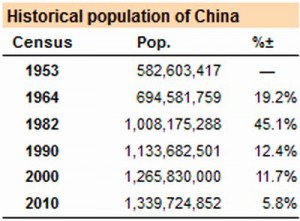 According to a July, 2013 estimated provided by the CIA World Factbook, China is home to a population of 1,349,585,838 people, which makes it the planet’s most populous country, closely followed by India, with 1.22 billion. Population density is estimated at 364.7 people per square mile, the 83rd in the world and similar to that of Uganda (Africa) or Tokelau (South Pacific). For 2013, the population growth rate is estimated at 0.46 percent, one of the lowest in the world, while birth rate is 12.25 births/1,000 population. Life expectancy is 74.99 years, with 72.96 for males and 77.27 for females. Also, the country has a sex ratio of 1.06 males for every female.
According to a July, 2013 estimated provided by the CIA World Factbook, China is home to a population of 1,349,585,838 people, which makes it the planet’s most populous country, closely followed by India, with 1.22 billion. Population density is estimated at 364.7 people per square mile, the 83rd in the world and similar to that of Uganda (Africa) or Tokelau (South Pacific). For 2013, the population growth rate is estimated at 0.46 percent, one of the lowest in the world, while birth rate is 12.25 births/1,000 population. Life expectancy is 74.99 years, with 72.96 for males and 77.27 for females. Also, the country has a sex ratio of 1.06 males for every female.
The last population census was conducted in 2010 and revealed that China had 1,338,612,968 people at the time. Concerned about its population growth, the Chinese government has attempted to introduce a strict family planning policy, known as the “one-child policy”, in which the goal is have only one child per family, with exceptions for ethnic minorities. This way, the government is hoping that population growth in China will stabilize in the next decades, but projections estimate a population of anywhere between 1.4 billion and 1.6 billion by 2025. According to a recent study, as many as three million Chinese babies are hidden by their parents every year, while families who breach the policy often lie during the census.
The most significant population growth in China was recorded between the 1953 and the 1982 census, when the number of inhabitants almost doubled from about 582 million to a little over 1 billion. By 1990, population has grown by 12.4 percent, while the 2000 census revealed a growth of 11.7 percent. According to the United Nations, Chinese population will reach 1.387 billion by 2020 and 1.393 billion by 2030. The same source claims that population will decline below the 1 billion mark by 2090.
Largest city in China
The largest city by population in China is Shanghai. Home to 23 million people, Shanghai is also the world’s most populous city. Located in the Yangtze River Delta in East China, Shanghai has an area of 2,448 square miles and a density of about 9,400 people per square mile. Shaghai is considered a major financial center and the busiest container port in the world. In addition, it’s also a popular tourist destination renowned for its historical landmarks such as The Bund, City God Temple (Shanghai Chenghuang Miao) and the Yu Garden. Shanghai means “Upon-the-sea” in Chinese, and it is believed that the named dates from the 11th century. China’s second most populous city is Beijing. Also the country’s capital city, it has a population of 19.2 million, an area of 6,487 square miles and a density of 3,200 people per square mile. China has three more cities with a population of more than ten million people: Tianjin – 11.1 million, Guangzhou – 11 million, and Shenzhen – 10.3 million. Nine more cities are home to at least five million inhabitants each: Wuhan (9.7 million), Dongguan (8.2 million), Chengdu (7.6 million), Chongqing (7.4 million), Nanjing (7.1 million), Hong Kong (7 million), Xi’an (6.5 million), Hangzhou (6.2 million) and Shenyang (5.9 million).
Ethnicity in China
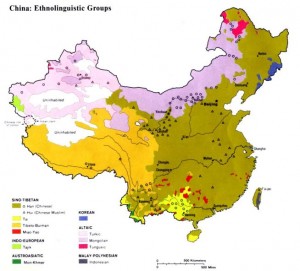 The Chinese government officially recognizes no less than 56 distinct ethnic groups, the largest of which are Han – 91.5 percent (1.22 billion people) of the total population at the 2010 census. The minority ethnic groups account for 8.5 percent of China’s population, which means about 113.8 people. The most important minority groups are Zhuang (1.27% – 16.9 million), Hui (0.79% – 10.6 million), Manchu (0.78% – 10.4 million), Uyghurs (0.76% – 10 million), Miao (0.71% – 9.4 million), Yi (0.65% – 8.7 million), Tuhia (0.63% – 8.3 million), Tibetans (0.47% – 6.3 million), and Mongols (0.45% – 6 million). According to the 2010 census, most foreign residents in China were from South Korea (120,750), the United States of America (71,493) and Japan (39,776).
The Chinese government officially recognizes no less than 56 distinct ethnic groups, the largest of which are Han – 91.5 percent (1.22 billion people) of the total population at the 2010 census. The minority ethnic groups account for 8.5 percent of China’s population, which means about 113.8 people. The most important minority groups are Zhuang (1.27% – 16.9 million), Hui (0.79% – 10.6 million), Manchu (0.78% – 10.4 million), Uyghurs (0.76% – 10 million), Miao (0.71% – 9.4 million), Yi (0.65% – 8.7 million), Tuhia (0.63% – 8.3 million), Tibetans (0.47% – 6.3 million), and Mongols (0.45% – 6 million). According to the 2010 census, most foreign residents in China were from South Korea (120,750), the United States of America (71,493) and Japan (39,776).
Religion in China
China is officially an atheist state since 1949, which makes it difficult to ascertain data on the religious population figures, but the government has opened up to traditional religions recently. However, most people report no organized religious affiliation and rather hold private worship of traditional religions at home. There are five religions recognized by the state, Buddhism, Taoism, Islam, Catholic Christianity, and Protestant Christianity, but Catholics and Protestants are not allowed to be affiliated to Rome of other churches abroad. According to different surveys quoted by Wikipedia, 30 percent of the population practices Taoism, while Buddhism is followed by between 11 percent and 18 percent of the country’s inhabitants. Christianity is practiced by 4 percent (some say 5 percent) of the population, while Islam by 2 percent of the population. Various ethnic minorities practice indigenous religions, including Dongbaism (Dongba means “Wiseman”), Moism, Ruism, Bon, Tibetan Buddhism, and Hinduism. Also, China has a number of more modern religions and sects, such as Xiantiandao (Yiguandao), Zailiism and Deism.
Language in China
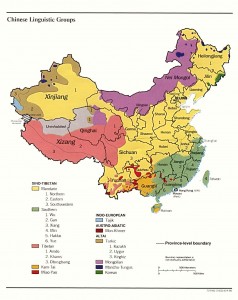 China’s official language is Putonghua. It is based on the Beijing dialect and it’s also known as Standard Chinese or Mandarin. Other languages and dialects spoken in China include other Mandarin dialects, Wu (Shanghainese), Yue (Cantonese), Minbei (Fuzhou), Minnan (Hokkien or Taiwanese, Teochiu), Xiang, Gan and Hakka, and other minority spoken languages. More than 70% of the majority Han ethnic group are native speakers of the Mandarin group of dialects spoken in northern and southwestern China. Non-Chinese languages spoken widely by ethnic minorities include Mongolian (Inner Mongolia), Tibetan, Uyghur and other Turkic languages, Korean, and Vietnamese. In addition, English is an official language in Hong Kong, while Portuguese is an official language in Macau. Also, a small number of Macanese speak Patuá, is a Portuguese dialect.
China’s official language is Putonghua. It is based on the Beijing dialect and it’s also known as Standard Chinese or Mandarin. Other languages and dialects spoken in China include other Mandarin dialects, Wu (Shanghainese), Yue (Cantonese), Minbei (Fuzhou), Minnan (Hokkien or Taiwanese, Teochiu), Xiang, Gan and Hakka, and other minority spoken languages. More than 70% of the majority Han ethnic group are native speakers of the Mandarin group of dialects spoken in northern and southwestern China. Non-Chinese languages spoken widely by ethnic minorities include Mongolian (Inner Mongolia), Tibetan, Uyghur and other Turkic languages, Korean, and Vietnamese. In addition, English is an official language in Hong Kong, while Portuguese is an official language in Macau. Also, a small number of Macanese speak Patuá, is a Portuguese dialect.
Territorial disputes
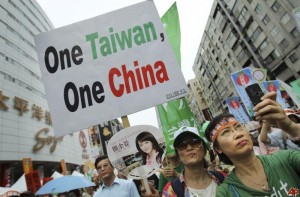 China is also involved in several territorial disputes with other Asian countries. The most important one involves the People’s Republic of China and the Republic of China, also known as Taiwan. Both officially claim to be the legitimate government of “China”, including Taiwan and nearby islands currently controlled by the Republic of China. Boundary dispute with India includes Aksai Chin, South Tibet, while the borders along the states of Arunachal Pradesh and Uttarakhand are disputed with the Autonomous Region of Tibet. China also claims the Senkaku Islands from Japan and the Scarborough Shoal from Philippines. Portions of the boundary with Bhutan are also under debate for decades, while the Paracel Islands are claimed by both Vietnam and Taiwan. Moreover, China is part of a dispute over the Spratly Islands with Taiwan, Malaysia, the Philippines, Vietnam, and Brunei. Lastly, the communist country has Exclusive Economic Zone disputes with North Korea (the Yellow Sea), South Korea (Yellow and East China Seas), Japan (the East China Sea), and Vietnam, the Philippines, Malaysia, Brunei, and Indonesia in the (South China Sea).
China is also involved in several territorial disputes with other Asian countries. The most important one involves the People’s Republic of China and the Republic of China, also known as Taiwan. Both officially claim to be the legitimate government of “China”, including Taiwan and nearby islands currently controlled by the Republic of China. Boundary dispute with India includes Aksai Chin, South Tibet, while the borders along the states of Arunachal Pradesh and Uttarakhand are disputed with the Autonomous Region of Tibet. China also claims the Senkaku Islands from Japan and the Scarborough Shoal from Philippines. Portions of the boundary with Bhutan are also under debate for decades, while the Paracel Islands are claimed by both Vietnam and Taiwan. Moreover, China is part of a dispute over the Spratly Islands with Taiwan, Malaysia, the Philippines, Vietnam, and Brunei. Lastly, the communist country has Exclusive Economic Zone disputes with North Korea (the Yellow Sea), South Korea (Yellow and East China Seas), Japan (the East China Sea), and Vietnam, the Philippines, Malaysia, Brunei, and Indonesia in the (South China Sea).
Economy in China
According to the International Monetary Fund (IMF), China has the world’s second-largest economy in terms of nominal GDP in 2013, with about $8.227 trillion, second to only the United States of America. However, in 2012, China was the world’s 86th country by nominal GDP per capita with $6,075 per capita, behind states such as Iraq, Peru or the Maldives. China is the world’s largest trading power, with a total international trade value of $3.87 trillion in 2012, and its foreign exchange reserves reached $2.85 trillion by the end of 2010, the world’s largest by far. China also owns an estimated $1.6 trillion of US securities and over $1.16 trillion in US Treasury bonds, which makes it the largest foreign holder of US public debt. Moreover, China is the world’s second-largest consumer of luxury goods behind Japan, with 27.5% of the global share, and has the second-highest number of US dollar billionaires – 251. In 2010, China became the world’s largest energy consumer. A world leader in gross value of industrial output, China’s main industries are mining and ore processing, machine building, armaments, textiles and apparel, petroleum, chemicals, consumer products, food processing, transportation equipment (including automobiles), and telecommunications equipment. Despite all these impressive figures, 13.4 percent of China’s population still lives below the World Bank’s poverty line. This means about 99 million people, which account for 7.3 percent of the rural population.
The 2013 population of China as stated in this article is only a speculation based on recent census data. As more accurate figures become available regarding the projected 2014 population of China, we will post it promptly! We also intend to publish a detailed religious map of China.

